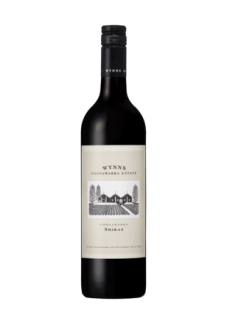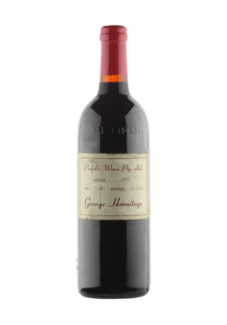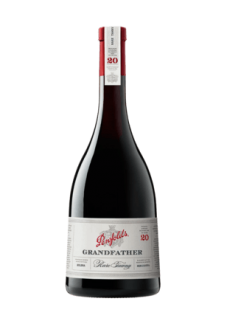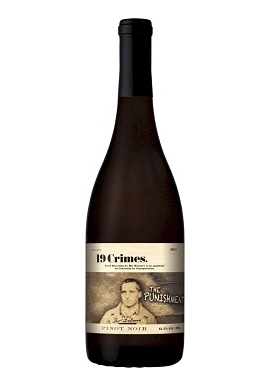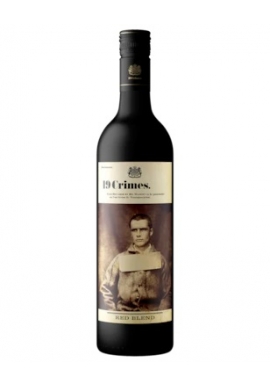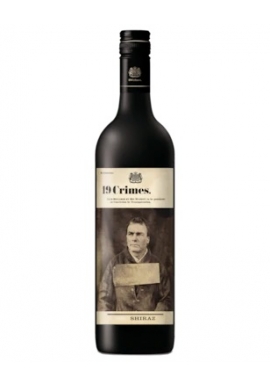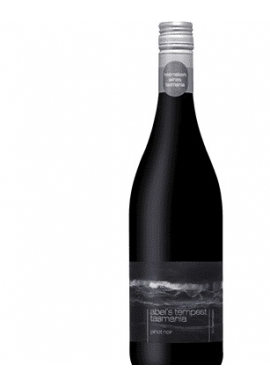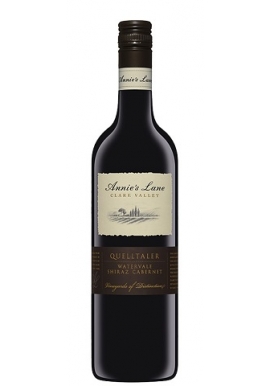Catalog
RED WINE
- AUSTRALIAN RED WINES
-
AUSTRALIAN RED BLENDS
- Barbera Sangiovese
- Cabernet Franc
- Cabernet Malbec
- Cabernet Malbec Merlot
- Cabernet Shiraz Merlot Petit Verdot
- Cabernet Merlot
- Cabernet Petit Verdot
- Cabernet Pinot Bordeaux Blend
- Cabernet Rose
- Cabernet Sauvignon Cabernet Franc Malbec
- Cabernet Sauvignon Franc Merlot
- Cabernet Sauvignon Malbec
- Cabernet Sauvignon Cabernet Franc Malbec Merlot
- Cabernet Sauvignon Petit Verdot Shiraz Merlot
- Cabernet Sauvignon Sangiovese Merlot
- Cabernet Shiraz
- Cabernet Shiraz Grenache
- Cabernet Shiraz Malbec Merlot
- Cabernet Shiraz Merlot
- Cabernet Shiraz Rose
- Cabernet Tarrango
- Cabernet Tempranillo
- Grenache Syrah Mourverdre
- Grenache Tempranillo Shiraz Mataro
- Malbec Petit Verdot
- Shiraz Barbera Nebbiolo
- Shiraz Cabernet
- Shiraz Cabernet Malbec
- Shiraz Cabernet Sauvignon Franc
- Shiraz Cabernet Sauvignon Petit Verdot
- Shiraz Durif Cabernet
- Shiraz Grenache
- Shiraz Grenache Matro
- Shiraz Grenache Monastrell Touriga
- Shiraz Grenache Mourvedre
- Shiraz Grenache Tempranillo
- Shiraz Grenache Touriga & Malbec Blends
- Shiraz Grenache Viognier Mourvedre
- Shiraz Mataro
- Shiraz Mourverde
- Shiraz Mascadelle
- Shiraz Petit Sirah
- Shiraz Riesling
- Shiraz Rose
- Shiraz Sangiovese
- Shiraz Tempranillo
- Shiraz Viognier
- Tempranillo Grenache
- Tempranillo Grenache Viognier
- RED ~ORGANIC WINES
- RARE ~ MUSEUM WINES
- FORTIFIED WINES
- AUSTRALIAN ALCOHOL FREE RED WINES
Red wine is a type of wine made from dark-colored (black) grape varieties. The actual color of the wine can range from intense violet, typical of young wines, through to brick red for mature wines and brown for older red wines. The juice from most purple grapes is greenish-white; the red color comes from anthocyan pigments (also called anthocyan...
Red wine is a type of wine made from dark-colored (black) grape varieties. The actual color of the wine can range from intense violet, typical of young wines, through to brick red for mature wines and brown for older red wines. The juice from most purple grapes is greenish-white; the red color comes from anthocyan pigments (also called anthocyanins) present in the skin of the grape; exceptions are the relatively uncommon teinturier varieties, which produce a red colored. Much of the red-wine production process therefore involves extraction of color and flavor evident from many great International and Australian Red wines
RED WINE There are 66 products.
Subcategories
-
AUSTRALIAN RED WINES
Red wine comes more naturally to Australia than white.The importance of the right soil than Australia's best red wine vineyard.South of Adelaide near the south west coast of South Australia, the terrain is completely flat,an abrupt deposit of a most unusual fertile red earth.Below it lies a few yards of pure chalk, and then a great reservoir of water.It is recognised as one of the world's most distinguished vineyards- Coonawarra.Coonawarra benefits from its far south climate as well as its soil.Its wines have what the trade calls elegance even while they are young.
Two of the red wine vines the Australians have planted have done them proud. The Bordeaux Cabernet mainly refered as Cabernet and the Shiraz of the Rhone often called Hermitage are both so successful that neither can be called better than the other. The best wineries make varietals wines from both,most of them in several different places, and either blend them or sell them separately as their judgment dictates.Within the Hunter Valley Region of New South Wales - the quality area of New South Wales, makes big and robust red wines, hugh almost sweet, Hermitage, strong tough Cabernet.Chancellors Cellars is proud to present an extensive list of Australian and International wines. Unlike Europe, Australia is not governed by the strict wine laws imposed on European wine growers, who are restricted to growing certain grapes in certain areas. The result is that while France for example has thirteen (13) wine growing regions, Australia has in excess of thirty five (35). The freedom to experiment outside these restriction in the Antipodean New World has also led to an entirely fresh crop of tastes and textures of wine.
Chancellors Cellars aims is to provide you with a fascinating tour of both International and Australian wines.Of course, each state and within that state in Australia, or in the case International wines regarding provinces each region has its unique soil, climate and levation that gives that varietal wine its uniqueness, flavour, texture, and palate. For many wine connoisseurs who may suggest which wines to choose to drink can be very helpful. These consist of wines for immediate drinking which generally applies to cheaper, budget quaffing wines - Hunter Verdelho, Barossa Semillon, almost all Riesling, Adelaide Hills Sauvignon Blanc, most Chardonnay, Chambourcin, Pinot Noirs, Shiraz, and Cabernets. No doubt there are wines for the medium term that require storage and cellaring from five (5) to ten (10) years. Generally this applies to medium priced wines such as Margaret River Chardonnay, Clare and Eden Valley Rieslings, Hunter Semillon, South Australia Shiraz, Margaret River Cabernet, Great Western wines from Bests, Central Victoria wines from Tahbilk and Heathcote wineries, Barossa Shiraz, McLaren Vale Shiraz.Wines for longer term storage that is ten years plus (10 plus). This generally applies to the best examples of each being: Hunter Semillon, Leeuwin Estate Chardonnay, Clare and Eden Rieslings, Tahbilk Marsanne, Rutherglen special and rare sweeties which will last for ever. Yarra Pinot Noir, Yarra Cabernet blends, Bests Great Western range Reds, Coonawarra cabernets especially Wynns and Barossa Shiraz. Overall the Western Australia wine region consists of the following:- Swan District, Perth Hills Blackwood Valley, Geographe, Great Southern Margaret River and Pemberton, these region represent some of the most revered wines made. critics the world over applaud the cabernets produced in Margaret River.
-
AUSTRALIAN RED BLENDS
Red wine blends and the varieties which accompanying this great widely travelled grape of the world, is the red Bordeaux, which is just about what everyone wants to grow. This main grape, being the Cabernet Sauvignon. It is well known that most Cabernet Sauvignon are better with just a little blending of some other grape when added to round out its sometime lean flavours, the other Bordeaux grapes, Merlot and Cabernet Franc, have come along as part to complement this variety.The red blends can deliver elegance, structure, and a certain debonair style. The classic flavours of the red Bordeaux is blackcurrants and cedarwood - that's Cabernet Sauvignon. It's the most polished traveller possible.However, when the Cabernet Sauvignon is often blended with Sangiovese,the blend is spectacularly.When Merlot takes over as the main grape in the blend, usually stiffened with a little Cabernet Sauvignon or Cabernet Franc can give the wine a bit more backbone. It makes a softer, more toffeeish wine than Cabernet Sauvignon, with luster, plummier fruit, but it doesn't usually age as well and can taste dull.
The Cabernet Franc varietal has a more grassier, lighter, more raspberryish flavour than the Cabernet Sauvignon. In a blend it adds perfume and elegance. Then again the number of varietal combinations such as Shiraz, Grenache, Pinot, Tempranillo, Zinfandel, Mourvedre, Dolcetto, Sangiovese, Nebbiolo, Sangiovese and Barbera can only provide interesting wines of character, taste, depth and quality.
Chancellors Cellars is proud to present an extensive list of Australian and International wines. Unlike Europe, Australia is not governed by the strict wine laws imposed on European wine growers, who are restricted to growing certain grapes in certain areas. The result is that while France for example has thirteen (13) wine growing regions, Australia has in excess of thirty five (35). The freedom to experiment outside these restriction in the Antipodean New World has also led to an entirely fresh crop of tastes and textures of wine. Chancellors Cellars aims is to provide you with a fascinating tour of both International and Australian wines.Of course, each state and within that state in Australia, or in the case International wines regarding provinces each region has its unique soil, climate and levation that gives that varietal wine its uniqueness, flavour, texture, and palate.For many wine connoisseurs who may suggest which wines to choose to drink can be very helpful. These consist of wines for immediate drinking which generally applies to cheaper, budget quaffing wines - Hunter Verdelho, Barossa Semillon, almost all Riesling, Adelaide Hills Sauvignon Blanc, most Chardonnay, Chambourcin, Pinot Noirs, Shiraz, and Cabernets. No doubt there are wines for the medium term that require storage and cellaring from five (5) to ten (10) years. Generally this applies to medium priced wines such as Margaret River Chardonnay, Clare and Eden Valley Rieslings, Hunter Semillon, South Australia Shiraz, Margaret River Cabernet, Great Western wines from Bests, Central Victoria wines from Tahbilk and Heathcote wineries, Barossa Shiraz, McLaren Vale Shiraz.Wines for longer term storage that is ten years plus (10 plus). This generally applies to the best examples of each being: Hunter Semillon, Leeuwin Estate Chardonnay, Clare and Eden Rieslings, Tahbilk Marsanne, Rutherglen special and rare sweeties which will last for ever. Yarra Pinot Noir, Yarra Cabernet blends, Bests Great Western range Reds, Coonawarra cabernets especially Wynns and Barossa Shiraz. Overall the Western Australia wine region consists of the following:- Swan District, Perth Hills Blackwood Valley, Geographe, Great Southern Margaret River and Pemberton, these region represent some of the most revered wines made. critics the world over applaud the cabernets produced in Margaret River.
-
RED ~ORGANIC WINES
Organic wine is wine made from grapes grown in accordance with principles of organic farming, which typically excludes the use of artificial chemical fertilizers, pesticides, fungicides and herbicides.The legal definition of organic wine varies from country to country.The primary difference in the way that organic wine is defined relates to the use (or non use) of preservatives during the wine-making process.
Wine production comprises two main phases - that which takes place in the vineyard (i.e. grape growing) and that which takes place in the winery (i.e. fermentation of the grapes into wine, bottling etc.). The baseline definition of organic wine as "wine made with grapes farmed organically", deals only with the first phase (grape growing). There are numerous potential inputs which can be made during the second phase of production in order to ferment and preserve the wine. The most universal wine preservative is sulphur dioxide. The issue of wine preservation is central to the discussion of how organic wine is defined.
Wine matures over time, and it is widely considered that certain types of wines improve with aging, as the flavors become more integrated and balanced. As a result, the greatest percentage of wines are produced in a way that allows them to last, sometimes as long as decades. The use of added sulfites is debated heavily within the organic winemaking community. Many vintners favor their use in small quantities for stabilization of wine, while others frown on them. Currently the only effective preservatives that allow wines to last for a long period are 'non-organic'. While there are a growing number of producers making wine without added preservatives, it is generally acknowledged that these wines are for consumption within a few years of bottling.
The various legal definitions of organic wine serve to address this challenge regarding the use of preservatives. In some parts of the world, namely Europe, wine cannot legally be labelled as 'Organic Wine'. Wines that have added sulfites, but are otherwise organic, are labeled "wine made from organic grapes.". In the United States, wines certified "organic" under the National Organic Program cannot contain added sulfites.
In the USA, strict rules govern the organic winemaking process at all stages of production including harvesting, the types of yeast that can be used during fermentation as well as storage conditions. These rules are applied for all imported and domestic wines that acquire USDA certification. In the USA, the total sulfite level must be less than 20 parts per million in order to receive organic certification. Organic certification in the UK is more simple as based on the fact that the grapes are grown organically.
Organic certification of wine is complex; different nations have different certification criteria. In the United States, the National Organic Program, run by the United States Department of Agriculture, sets standards for certification of organic foods, including organic wines.In the United Kingdom, organic wine is defined as such made out of organic grapes.Some wineries that are technically organic choose not to be certified for various reasons.
-
RARE ~ MUSEUM WINES
Chancellors Cellars specialises in back vintage Australian and International fine wines, plus a selection of high-end Bordeaux and Burgundy. Our back vintage depth enables our customers to build wine lists with a point of difference, creating opportunities to provide customers with a superior wine experience.All these old rare and museum wines are incredible gems which reflect their heritage.
-
FORTIFIED WINES
About the time that Dom Perignon noticed the first bubbles in his quietly cellared bottles, the English were unhappy with shipments of table wines arriving, in barrel, in poor condition. A suggestion was made that by adding brandy to the wine might preserve it better. And it did so!
Not only the addition of brandy preserve the wine and add a smooth, alcoholic mouthfeel, but with further time in the barrel, a noticeable change occurred. The porous oak, breathing and allowing a certain amount of evaporation, brought new life to these wines. This was the start of what we know as fortified wines, and long term maturation in oak and careful blending, they've developed into some of the greatest wines on the globe, port from Oporto in Portugal, sherry a name derived from Jerez in Spain, vermouth, marsala and tokay (tokaji) have all proven to be favourite and fashionable aperitifs or digestifs.
In the early days of Australian colonisation, fortified styles similar to ports and sherries were produced with ripe fruit, high levels of sugar, and brandy distilled from base wines. People liked the sweetness and, we suspect, the strength, so for 130 years or more, fortified wines were consumed here in quantities far out measuring standard table wines. Indeed, many winemakers still practising their craft today were apprenticed into the art of making sherry and port because that was what people drank at the time. Despite our shift to a preference for table wines following the Second world War, many consumers still have a liking for chilled dry sherry or an after dinner port with coffee. The custom will not die out because, at their best, these wines are magnificent.
-
AUSTRALIAN ALCOHOL...
An alcohol-free red wine should look and taste like a rich red coloured wine that distinguishes it from other non-alcoholic red wines, this warming wine is easy to drink. Like many non alcoholic wines, this was created by producing it to a normal alcoholic strength and then de-alcoholising it. This is the process that can compromise flavour, but in this case you’ll be pleased to find a fruity taste that isn’t overly sweet, and is low in calories. The bottle design has an image of the idyllic vineyard, ensuring a conventional and convincing look.
-
$115.95
19 Crimes Cabernet Sauvignon 750ml x 6... 19 Crimes Cabernet...
19 Crimes Cabernet Sauvignon has a bright red to crimson hues, this wine confidently takes charge with intense lifted vanilla aromatics balanced with red currants, violets, and mulberry fruits. Firm and full on the palate with a subtle sweetness giving a rich mouth feel. Alcohol content 13.5% 19 Crimes Cabernet Sauvignon has a...
-
$152.95
19 Crimes Magistrate Shiraz 750ml x 6... 19 Crimes Magistrate Shiraz...
19 Crimes Magistrate Shiraz is a deep red with purple hues wine.19 Crimes Magistrate Shiraz palate has juicy dark fruits and savoury, spicy characters combined with soft, chocolatey tannins and hints of vanillin oak. 19 Crimes Magistrate Shiraz is a deep...
-
$115.95
19 Crimes Pinot Noir 750ml x 6 South... 19 Crimes Pinot Noir 750ml...
19 Crimes Pinot Noir is part of a range that celebrates our convict history. It’s delicious combination of fresh strawberries, raspberries and white pepper. 19 Crimes Pinot Noir is part of a...
-
$115.95
19 Crimes Red Blend 750ml x 6 South... 19 Crimes Red Blend 750ml...
According to Crimes 19 Red Blend variety bears the same traits as those banished to Australia. Defiant by nature, bold in character. Always uncompromising. It's a taste you'll never forget. 19 Crimes Red Blend is vibrant and bold. 19 Crimes Red Blend has a dark berry fruits mixed with spice oak flavours which are apparent on the palate. According to Crimes 19 Red Blend...
-
$115.95
19 Crimes Shiraz 750ml x 6 South Eastern... 19 Crimes Shiraz 750ml x 6...
19 Crimes Shiraz is full body wine and round on the palate.The vanilla aromatics carry through on the palate and compliment subtle flavours of raspberries, dark plums, and chocolate leading to a lingering finish. 19 Crimes Shiraz is full body wine...
-
$219.95
Abel's Tempest Pinot Noir 750ml x 6... Abel's Tempest Pinot Noir...
Abel's Tempest Pinot Noir is a medium-bodied and fruit-driven wine. The nose exhibits aromas of sour cherry and red current.Alcohol Voulme 13%. Abel's Tempest Pinot Noir is a...
-
$145.95
Annie's Lane Cabernet Merlot 750ml x 6... Annie's Lane Cabernet...
Annie's Lane Cabernet Merlot from the Clare Valley of South Australia has a ripe and generous flavour, the leafy, minty characters of Cabernet are complemented by the softness and plummy fruit coming from the Merlot. Annie's Lane Cabernet Merlot from the...
-
$145.95
Annie's Lane Shiraz 750ml x 6 Clare Valley... Annie's Lane Shiraz 750ml x...
Annie's Lane Shiraz has a typically full flavoured Clare Valley region from South Australia Shiraz from the crew at Annie's Lane. Annie's Lane Shiraz has a typically...
-
$195.95
Annies Lane Quelltaler Shiraz Cabernet... Annies Lane Quelltaler...
Annie's Lane Quelltaler Shiraz Cabernet Sauvignon is a wine with finely balances the richness of Shiraz with the structure of Cabernet Sauvignon. Plums, raspberries, red and blackcurrants, mulberries, and spices along with chalky fine tannins. Viticulture Watervale is a unique region within the Clare Valley. Annie's Lane Quelltaler Shiraz...
ABN: 11 806 263 393
Liquor Licenses
337 526 06
360 674 16


